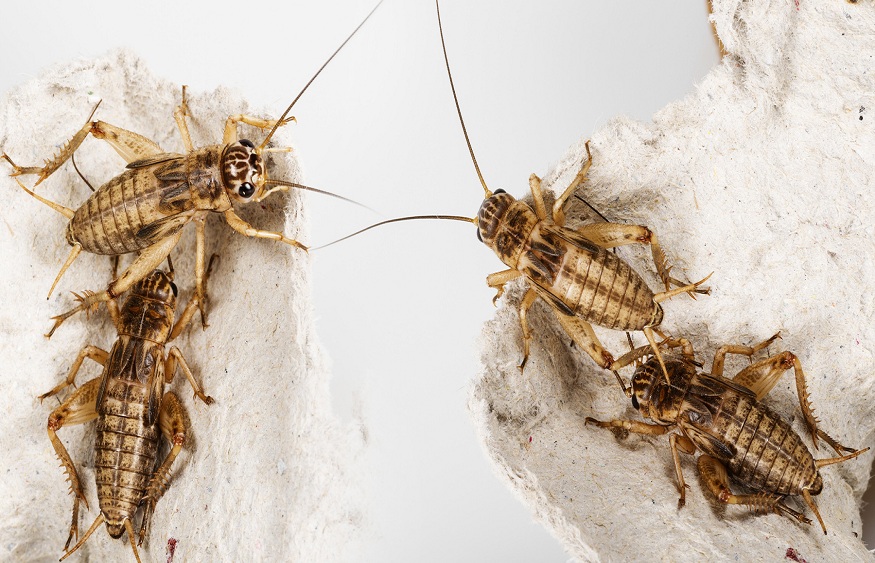Cricket season is in full swing, and while the sound of chirping may be soothing to some, dealing with these pesky insects inside your home can be quite a nuisance. If you’re looking for effective ways to get rid of crickets without resorting to harmful chemicals, you’ve come to the right place! In this blog post, we’ll explore various chemical-free methods to help you keep those unwanted crickets at bay. From natural repellents to homemade traps, we have all the solutions to reclaim your space from these hopping invaders. So, let’s dive in and discover how you can say goodbye to crickets using safe and environmentally friendly approaches!
What Are the Chemical-Free Methods for Cricket Removal?
Cricket infestations can be a nuisance, especially in homes and gardens. While various chemical insecticides are available on the market for cricket removal, many people are concerned about the potential harm these chemicals can cause to the environment, pets, and even humans. Fortunately, several chemical-free methods for cricket removal are safe, eco-friendly, and effective. Let’s see them one by one.
Natural Repellents
Cricket infestations can be a nuisance, but you don’t have to use harmful chemicals to eliminate them. Several natural repellents can help keep crickets away from your home and garden.
One effective natural repellent is peppermint oil. The strong scent of peppermint repels crickets, so spraying a solution of water and peppermint oil around windows, doors, and other entry points can deter them from coming inside.
Another option is vinegar. The strong smell of vinegar can make crickets think twice about invading your space. Simply mix equal parts vinegar and water in a spray bottle and apply it to areas where crickets tend to gather.
Cedarwood chips or cedar essential oil are also known as cricket deterrents. Place cedarwood chips near doorways, sprinkle a few drops of cedar essential oil on cotton balls and place them in areas where crickets are present.
Utilizing these natural repellents allows you to effectively keep crickets at bay without resorting to harmful chemicals. Remember to reapply these remedies regularly for the best results!
Physical Barriers
When it comes to cricket removal, physical barriers can be an effective chemical-free method. These barriers work by preventing crickets from entering your home or garden in the first place.
One popular physical barrier is sealing cracks and crevices where crickets may enter. Use caulking or weather stripping to seal any gaps around windows, doors, and other entry points. Pay special attention to areas where utility lines enter your home.
Another option is installing door sweeps on exterior doors. These sweeps create a tight seal at the bottom of the door, preventing crickets from crawling underneath. Additionally, window screens with a fine mesh can help keep crickets out while still allowing fresh air into your home.
For gardens or outdoor areas, consider using fencing or netting to create a barrier that keeps crickets away from plants and crops. This can help protect your vegetation without resorting to chemicals.
Implementing these physical barriers can significantly reduce the chances of crickets invading your living spaces or damaging your plants.
Biological Controls
Biological controls are an effective and chemical-free method to tackle cricket infestations. By leveraging the power of nature, you can naturally reduce the population of crickets without harming other beneficial organisms or resorting to toxic chemicals.
One biological control option is introducing predators that feed on crickets. For example, certain bird species, like chickens or ducks, have a natural affinity for hunting and consuming crickets. Allowing these birds to roam freely in your yard can help keep cricket populations in check.
Another approach involves using nematodes, which are microscopic worms that parasitize insects like crickets. These beneficial nematodes can be purchased from gardening stores and applied in affected areas with high cricket activity. Once released into the soil, they actively seek out and infect cricket larvae, effectively reducing their numbers over time.
In addition to predators and nematodes, you can also consider attracting other insect-eating animals, such as frogs or lizards, to your garden or outdoor spaces. Creating a hospitable habitat with suitable food sources and shelter will encourage these natural allies to take up residence and contribute to controlling the cricket population.
What are the Homemade Cricket Traps?
When it comes to cricket removal, homemade traps can be an effective and chemical-free solution. These traps are simple to make and use common household items. Here are a few ideas for creating your own homemade cricket traps.
One option is the jar trap method. All you need is a glass jar with a lid, some bait (such as bread or fruit), and petroleum jelly or cooking oil. Cut small holes in the jar lid, then apply a thin layer of petroleum jelly or cooking oil around the rim to prevent the crickets from escaping once they enter the jar. Place the bait inside the jar and secure the lid tightly. The crickets will be attracted to the food and climb into the trap but won’t be able to get out.
Another homemade trap idea is using sticky paper or tape. Simply place strips of adhesive tape or sticky paper along areas where crickets are commonly found, such as baseboards, window sills, or near entrances. When crickets come into contact with these surfaces, they will become stuck and unable to move.
If you prefer a more natural approach, try making a vinegar trap by filling a shallow dish with apple cider vinegar mixed with water. Crickets are attracted to the scent and will hop into the dish but won’t be able to escape due to its slippery surface.
Conclusion
In conclusion, using chemical-free methods for cricket removal is safer for our health and the environment and can be just as effective in getting rid of these pesky insects. From natural repellents to simple traps, there are plenty of options to choose from. So next time you encounter a cricket problem, try these alternative methods before using harmful chemicals. Your home and family will thank you!

